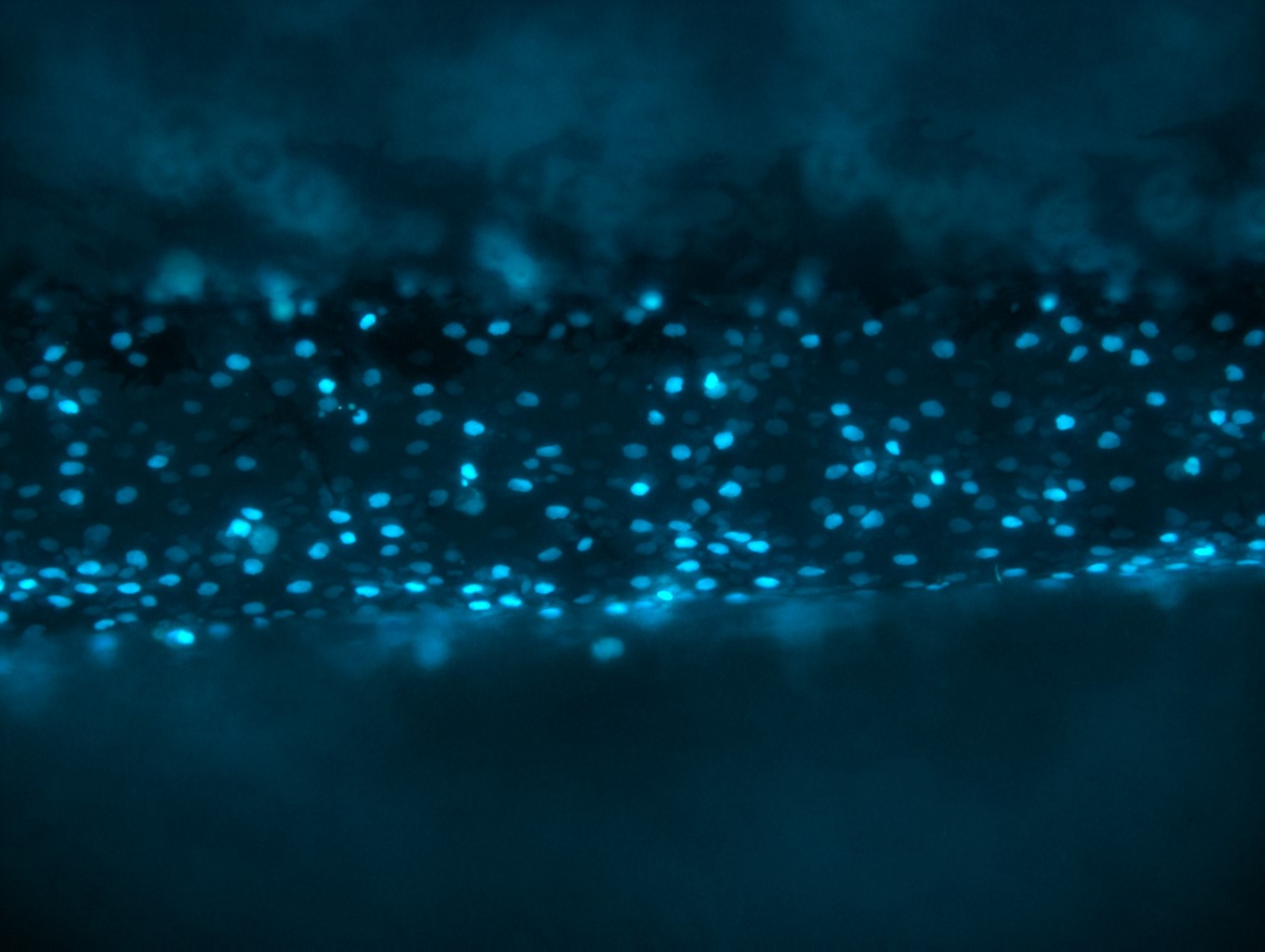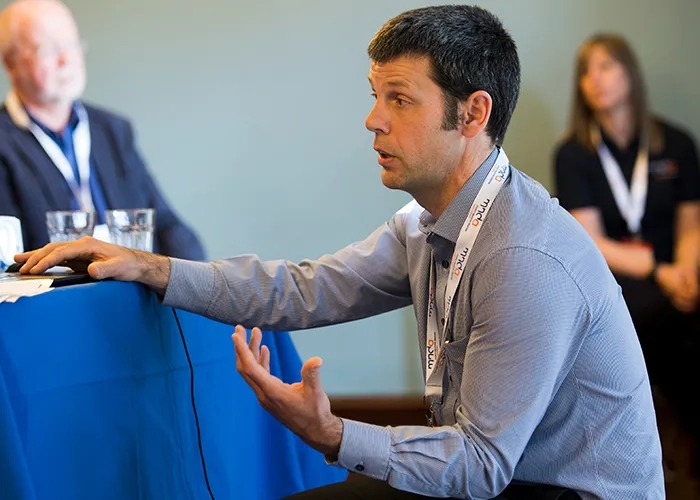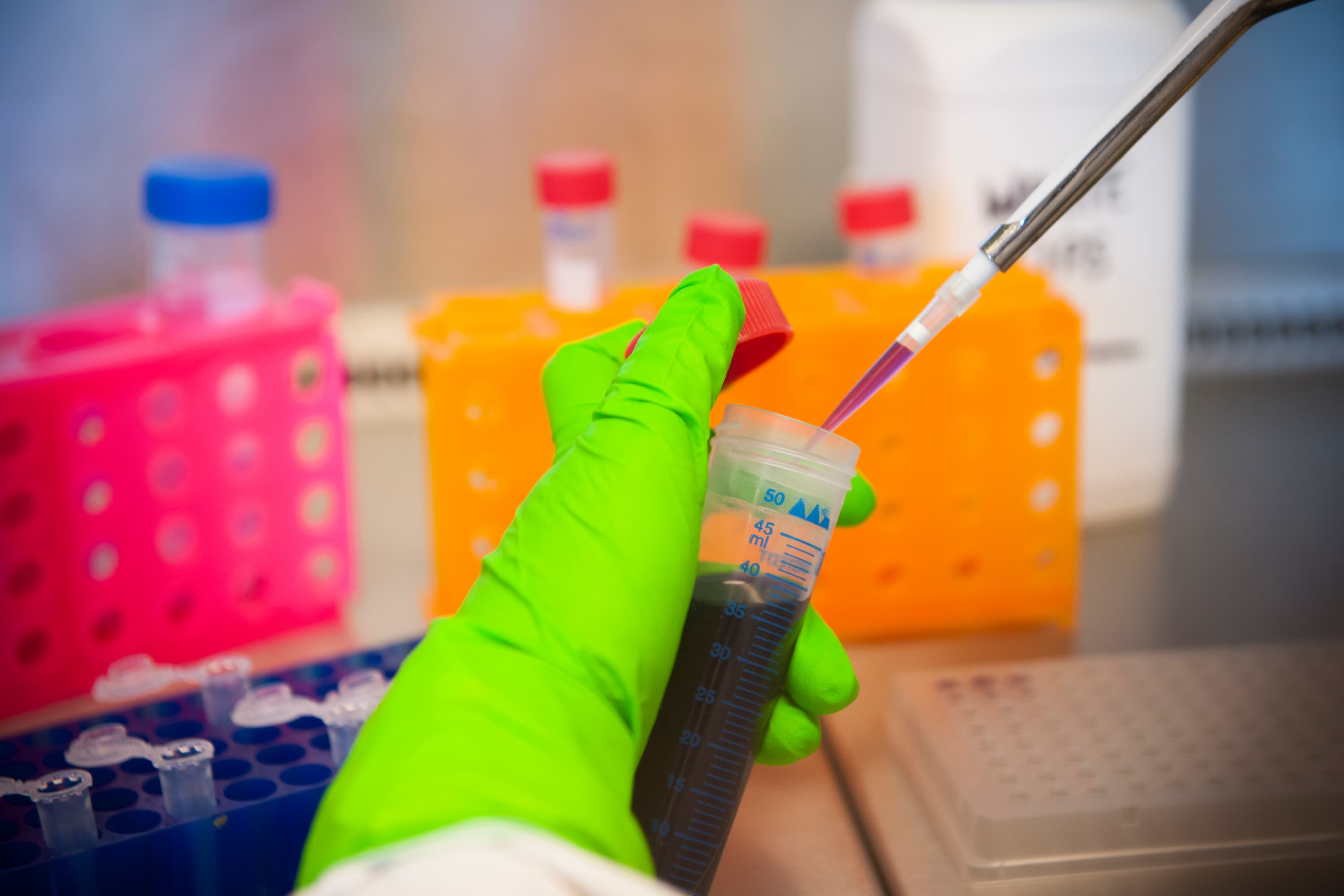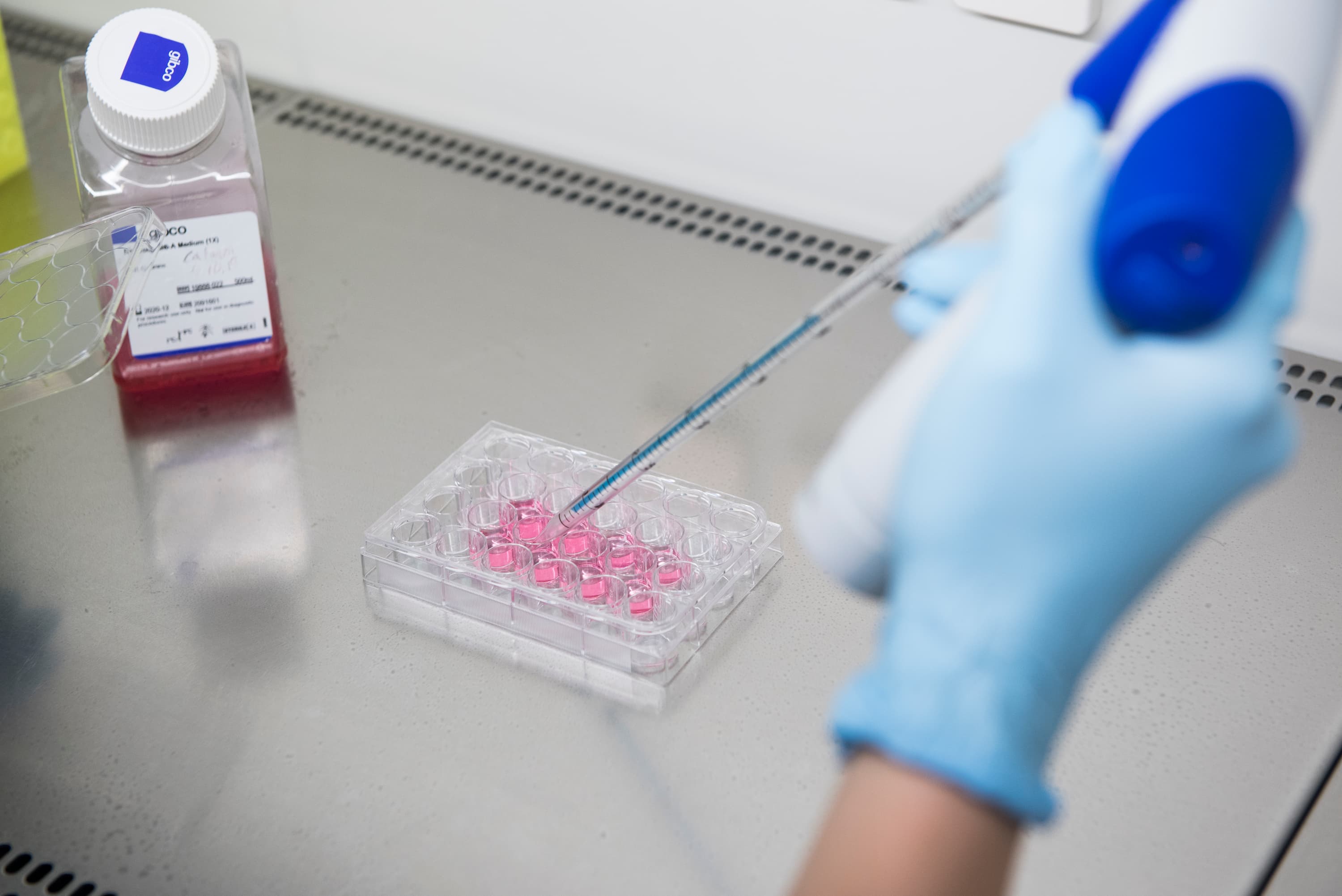Scientist, podcast host and expert in zebrafish, Nick Cole is our remarkably driven Head of Research. He’s lived a fascinating life and brings a wealth of experience to our work – plus a confidence that answers to MND will come sooner rather than later.
We sat down to talk with him to find out what makes him tick – and why he’s sure that the ‘Cure Finders Army’ will beat this disease.
1. Starting at the very beginning, what was the focus of your PhD?
I studied muscle development and physiology at the Universities of St Andrews and Dundee in Scotland, specifically focusing on how locomotory muscle forms during development.Muscle is a fascinating plastic tissue that can change in response to use, or developmental temperature. Also, the proteins that make up our muscles are the same as those in fish, therefore I studied how muscle forms in fish as they grow under different conditions of exercise and temperature. That’s how I came to use fish as a research model.
2. How did your work with fish bring you to be working in MND research?
Throughout my research career, including while studying in Australia, I had incredible mentors who were great at helping me make connections. My zebrafish research model got noticed by Australian neurologists looking for answers to MND. I was approached about using my model in MND research and that was my introduction to the disease.

3. Did you ever think it might lead to you becoming Head of Research at a charity as vital as the MND Association?
Not at the time, no. I’ve always had an interest in biology and engineering, and a fascination with how things work. I’ve always been good with my hands too. I grew up tinkering with cars, building things and problem solving. I had no idea I’d become a Head of Research. I pursued my skill in conducting experiments and thinking of alternative ways to address unanswered questions – and this is where it brought me.
4. It might be a bit challenging for someone reading this to picture what a Head of Research does, so what activities make up an average day for you?
People often imagine researchers spend all day in a lab coat, but the reality for me is quite different – although I do still get involved directly in projects from time to time.
I have an overview of all our grants and funding and how each is progressing. I keep up to date on other research that could help us find answers to MND too, so I review global research publications each week. That takes in clinical trial news and evidence-based drug and care developments. Together with my team we then distil and disseminate all that is going on in MND research to our community/audience. Really, my work is about the wider team. We have a great team here at the MND Association and I try to keep everyone connected. I also work to nurture early career researchers who show an interest in MND – just like my mentors did for me.
5. How much of your work is public-facing?
It’s a big part of it. I help organise the International MND Symposium and I feed into fundraising appeals too. I also do public speaking and I make the most of opportunities to highlight MND research in the media. I am one of the hosts of the MND Association Podcast too – which you should definitely listen to!
6. You must have to be on top of a lot of projects at any one time.
We have over 100 active projects in our portfolio and we’re constantly looking at where best we can allocate funding from Cure Finders. We make sure every single penny counts.
7. What’s the most exciting aspect of your role? What are the moments that make you think ‘I love doing this’?
Trying to solve a puzzle like MND is certainly exciting – but it’s horrible too as we have no time to lose. I try to play my part in finding a solution by maintaining a non-blinkered overview and looking for opportunities to advance what we’ve done so far.I maintain a deep fascination in biology – so I’m always conscious that every discovery has determined people behind it who eat, sleep and dream the problem. At the same time I’m acutely aware that there is a person with MND, or their family and friends, behind every donated sample and incremental advance we make. There are so many good people working day and night on MND. They’re the ones who’ll be behind the answers we’re looking for.
8. And what’s the toughest part of the job, the part you wish you could change?
The toughest thing for me is that there’s no treatment yet. I’d love the money to be there to make the pace of research faster. Most people haven’t seen the horror of MND, so they don’t have a motivation to fund it. Awareness is key and there is an answer that will bring an effective treatment.
9. Which historical MND research project do you feel was perhaps the most pivotal in determining how modern MND research is performed?
I’d say project MINE was a real gamechanger for how we look at MND. The outcomes of this collaborative effort are far reaching and have given us discoveries to build from which are offering new paths for MND research. Now more than ever, research doesn’t happen in isolation – tackling the complexity of MND requires teamwork and collaboration at every level using cutting edge techniques. We’re really standing on the shoulders of giants in this regard and each new discovery provides further momentum to drive us forward.
10. In the last few years, it feels like awareness of MND has really increased in the UK. What do you hope that might mean for MND research?
I hope more people learning about MND will lead to more people getting interested in the potential of our research, joining the fight and helping to fund it. Just like you have if you’re reading this.
11. What message would you like to pass on to people who sign up to become Cure Finders, especially those that have done so most recently?
Thank you. You have joined an army that’s pushing at the door of an MND cure. Hundreds of others like you want answers to MND – and those answers will come.
12. Other than additional funding, what do the Cure Finders bring to MND research that perhaps you didn’t have before?
The Cure Finders have created a real sense of solidarity among researchers. We know the Cure Finders are out there, a vital part of the team, quietly doing their bit. From a practical perspective, their contributions give us increased certainty and stability around income. Simply put, for every Cure Finder, we’re able to fund more research. That’s really quite amazing.
13. In an ideal world, if you could wave a magic wand, where would you love MND research to take things in 30 years’ time?
I don’t think we’ll need to still be searching in 30 years. The answers we seek will come and they’ll be used to help people with other neurological diseases too. I truly believe no one will need to live with MND in 30 years – it will be confined to the history books.
14. What do your family think about your work? Do they have a good grasp of it or is it a bit of a mystery?
My family are very proud actually. This role takes a lot of my time and I simply couldn’t do it without their support. They do their bit too. They did the Ice Bucket and Sherpa challenges. They’ve also done runs and fundraisers to support MND research.
15. How much do you miss the weather in Australia?
Australia is a wonderful place, too far from family though, plus I enjoy a bit of grit and reality to feel alive. I really love the UK. I love the way the weather changes, you just have to dress for it and get out there!
16. When you’re not working or commuting, what are you passionate about that our readers might be surprised by?
We and our three children all quite outdoorsy. We kitesurf, wing foil and cycle. We’re currently building a VW Beetle too. I see friends as much as possible – working in MND makes you value every moment you have.


